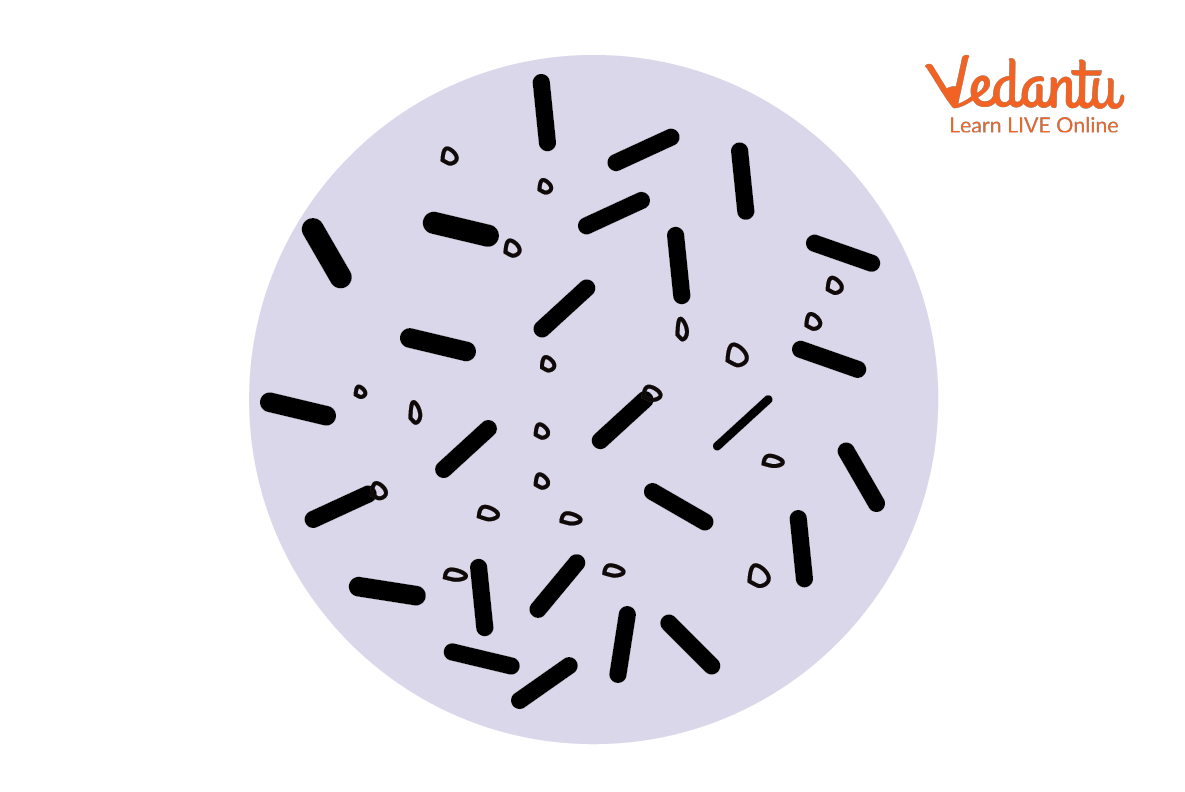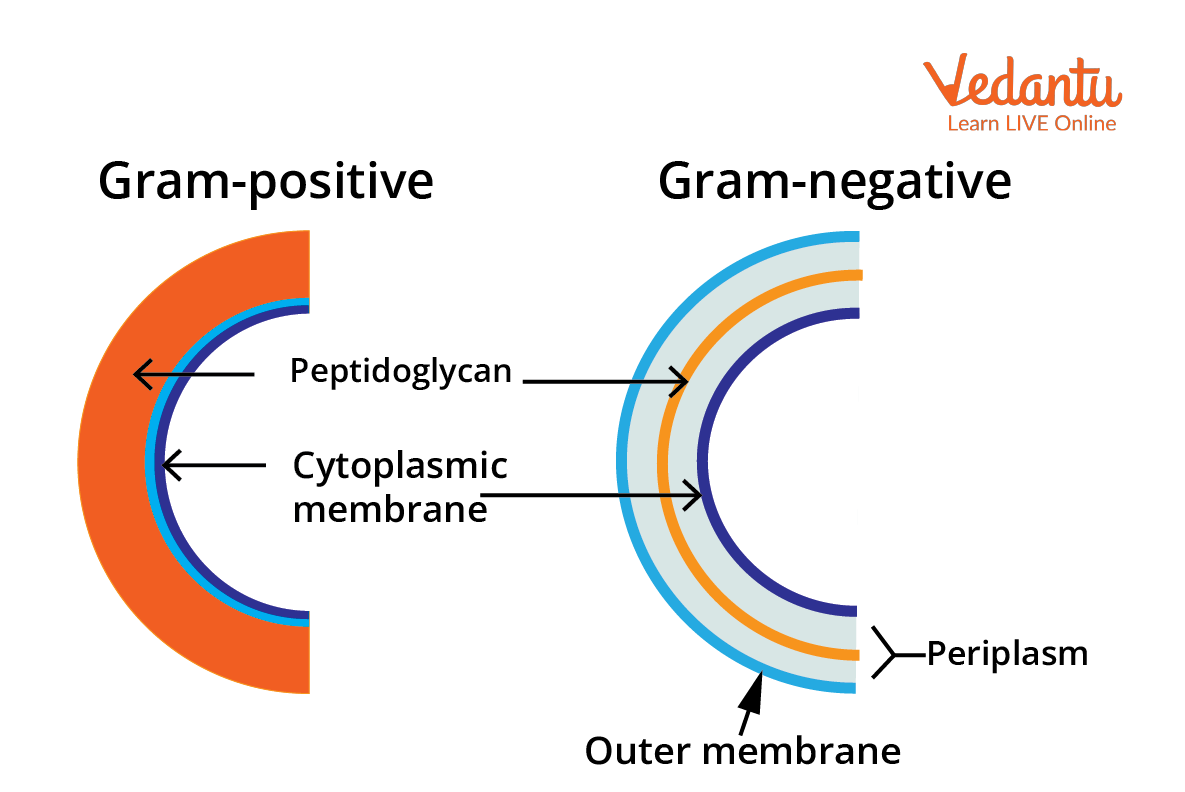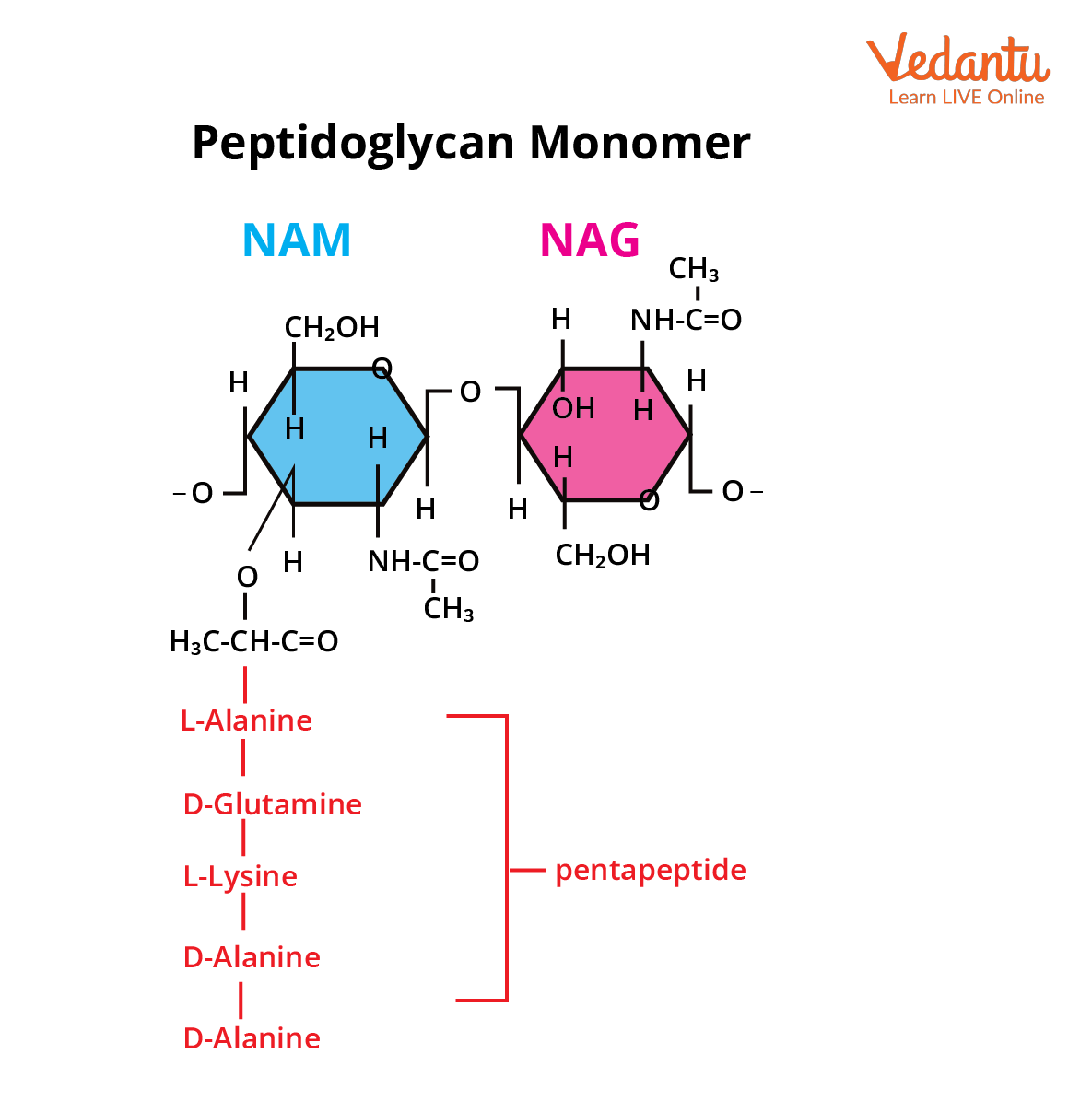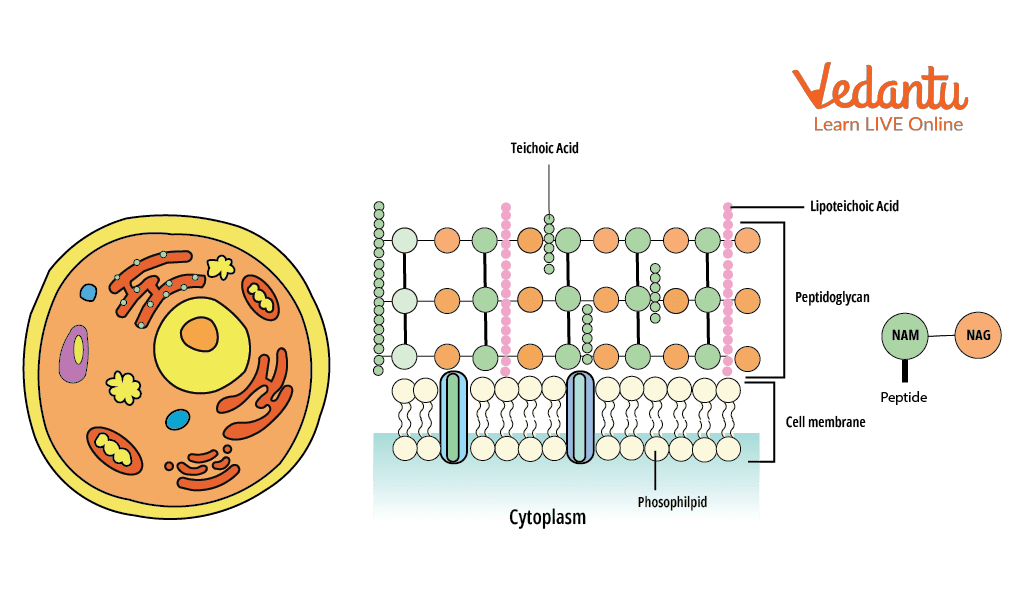Major Cell Wall Differences in Gram Positive and Gram Negative Bacteria
Bacteria are unicellular prokaryotic organisms devoid of nuclei. The size varies from 0.2 µm to 50 µm having varied morphology in their appearance. Examples of gram-positive bacteria are Methicillin-resistant Staphylococcus aureus (MRSA), and examples of gram-negative bacteria are Salmonella, Pneumonia and Gonorrhea. These groups of bacteria are a serious threat as they cause major diseases in humans.
All prokaryotic cells are surrounded by a complex cell made of peptidoglycan, also known as murein. In 1884, Christian Gram invented the staining procedure to classify bacteria. The bacteria that retain the Gram stain are gram-positive while which does not retain the gram stain are gram-negative bacteria. This difference lies in morphological variation seen in the cell wall structure of both gram-positive and gram-negative bacteria. Gram-positive and gram-negative bacteria difference pdf can be downloaded for more information.
Features of Gram-Positive Bacteria
The two major divisions of gram-positive bacteria are:
Phylum Actinobacteria - Have high GC content. Example: Streptomyces.
Phylum Firmicutes - Have low GC content. Examples: Bacillus and Clostridium.
In gram staining procedures, they appear purple yielding positive results.

Gram Stain Results in Gram-positive Bacteria
This group is composed of a thick, homogenous, singular, peptidoglycan layer (20 to 80 nm thick).
Gram-positive bacteria lack cellular appendages and are non-motile.
They generally appear round, rod or filamentous.
The general mode of reproduction is binary fission.
This group has the ability to form endospores.

Cell Wall Structure of Gram-Positive Bacteria and Gram-Negative Bacteria
Features of Gram-Negative Bacteria
The gram-negative bacteria belong to the phylum Pseudomonadota. The two major groups are Enterobacteriaceae and the non-fermenters.
In gram staining, they appear red or pink as they do not retain the colour of crystal violet dye.
This group is composed of a 2 to 7 nm thick peptidoglycan layer surrounded by an outer membrane.
They are round, rod or spherical in shape.
Reproduction is either by binary fission or budding.
These bacteria do not form endospores.
Cell Wall Structure of Gram-Positive and Gram-Negative Bacteria
The cell wall of gram-positive and negative bacteria is made of peptidoglycan, also called murein. Peptidoglycan is a polymer having two sugar derivatives.
NAG - N-acetylglucosamine
NAM - N-acetylmuramic acid
These derivatives are linked together by β-1,4 glycosidic bonds. A carboxyl group of NAM tetrapeptide chains made of alternate D and L amino acids is linked. The peptide interbridge if present connects tetrapeptide chains. This peptide cross-link reaction is called transpeptidation.
The cell wall of gram-positive bacteria contains acidic negatively charged substances called teichoic acid. These are the polymers of glycerol and ribitol linked by phosphate moiety. The presence of teichoic acid makes the cell wall rigid by attracting positive ions like magnesium and sodium. In gram-negative bacteria, teichoic acid is absent.
Biosynthesis of Peptidoglycan
Linking of nucleotides with sugar precursors to form UDP-NAM and UDP-NAG; this step occurs in the cytoplasm.
Addition of amino acid group to UDP-NAM in a sequential manner to form NAM-pentapeptide.
In the third step, UDP-NAM pentapeptide forms a complex with bactoprenol to form lipid I. This step occurs at the plasma membrane.
A NAG molecule from a complex of UDP-NAG gets added to lipid I to form lipid II.
In the last stage, an outside plasma membrane polymerisation reaction occurs.

Peptidoglycan Monomer
Gram-negative bacteria have an additional outer membrane composed of lipids and polysaccharides. This complex is called the lipopolysaccharide complex (LPS). LPS acts as an endotoxin layer as it contains lipid A which is toxic. The outer membrane has porins which make it more permeable than the plasma membrane.
Differences between Gram-Positive and Gram-Negative Bacteria
Diagram of Gram-Positive and Gram-Negative Bacterial Cell Wall

Structure of Gram-positive Cell Wall
Significance and Important Examples
Benefits and Examples of Gram-Positive Bacteria
These are non-pathogenic and are found in the human body.
Some of the gram-positive bacteria help in the formation of cheese.
Corynebacteria are used in the large-scale production of enzymes, nucleotides and amino acids.
Bacillus amyloliquefaciens acts as a natural antibiotic protein called barnase.
Negative Impact of Gram-Positive Bacteria
Staphylococcus species cause various skin-related disorders and are fomite borne. Similarly, gram-positive bacteria can cause food poisoning, respiratory disorders etc.
Negative Impact of Gram-Negative Bacteria
As these bacteria have outer membranes, they are resistant to the action of antibiotics. They act as endotoxin and cause diseases like cholera, meningitis, septic shock diseases etc.
Interesting Facts
According to WHO, a few pathogens, gram-positive bacteria are a serious concern and a health care problem, examples: multidrug-resistant (MDR) bacteria like methicillin-resistant Staphylococcus aureus (MRSA), vancomycin-resistant Enterococcus faecium (VRE) and β-lactamase-resistant Streptococcus pneumonia.
A new antibiotic named teixobactin produced by Eleftheria terrae was discovered in 2015. It is highly effective against resistant bacteria.
Important Questions
What are the differences between the cell walls of gram-positive and gram-negative bacteria?
Ans: The gram-positive bacteria have single-layered cell wall while gram-negative bacteria cell wall is multilayered having outer LPS membrane. This makes gram-negative bacteria more resistant.
What are the major diseases caused by gram-negative bacteria?
Ans: Diseases caused by gram-negative bacteria are a major concern to the healthcare industry as they are highly resistant to the action of antibiotics. Major infections include pneumonia, bloodstream infections, wound or surgical site infections, and meningitis.
Key Features
The cell wall of gram-positive and gram-negative bacteria is a chemical complex structure. It protects bacteria and plays a key role in adaptation.
The major component of the cell wall is peptidoglycan which is conserved in all prokaryotic organisms.
Gram-negative bacteria have outer membranes, thus, these groups of bacteria are human pathogens.


FAQs on Gram Positive vs Gram Negative Bacteria: Complete Guide
1. What is the fundamental definition of Gram-positive and Gram-negative bacteria?
Gram-positive and Gram-negative bacteria are two major groups of bacteria classified based on their cell wall structure and their reaction to the Gram staining method. Gram-positive bacteria have a thick peptidoglycan layer and retain the crystal violet stain, appearing purple. Gram-negative bacteria have a thin peptidoglycan layer and an outer lipopolysaccharide membrane, which prevents them from retaining the crystal violet stain; they are counterstained pink or red by safranin.
2. What is the main structural difference between the cell walls of Gram-positive and Gram-negative bacteria?
The primary difference lies in the composition and thickness of their cell walls.
- Gram-positive bacteria possess a very thick cell wall made almost entirely of peptidoglycan (as much as 90% of the cell wall).
- Gram-negative bacteria have a much thinner layer of peptidoglycan, which is located in the periplasmic space between an inner cytoplasmic membrane and a unique outer membrane composed of Lipopolysaccharide (LPS). This outer membrane is a key distinguishing feature.
3. How does the Gram staining procedure work to differentiate between these two types of bacteria?
The Gram staining procedure is a four-step process that exploits the cell wall differences:
- Crystal Violet: All bacteria are first stained with this primary purple dye.
- Iodine: This acts as a mordant, forming a large crystal violet-iodine complex within the cells.
- Alcohol/Acetone Decolourisation: This is the crucial step. In Gram-positive bacteria, the thick peptidoglycan layer dehydrates and traps the dye complex, so they remain purple. In Gram-negative bacteria, the alcohol dissolves the outer LPS membrane and the thin peptidoglycan layer cannot retain the dye, so they become colourless.
- Safranin Counterstain: This pink/red dye is used to stain the now-colourless Gram-negative bacteria, making them visible.
4. Why is classifying bacteria as Gram-positive or Gram-negative so important in medicine?
This classification is critical for diagnosing and treating bacterial infections. Because of their structural differences, the two groups are susceptible to different types of antibiotics. For example, Penicillin is often effective against Gram-positive bacteria as it disrupts peptidoglycan wall formation. In contrast, Gram-negative bacteria are often resistant to such antibiotics due to their protective outer LPS membrane. A quick Gram stain can therefore guide a doctor to prescribe the most effective antibiotic treatment promptly.
5. Which type of bacteria is generally more resistant to antibiotics and why?
Gram-negative bacteria are generally more resistant to a wider range of antibiotics. The primary reason is their formidable outer membrane containing Lipopolysaccharide (LPS). This membrane acts as a physical barrier, preventing many antibiotic molecules from reaching their target, the peptidoglycan layer or the inner cell membrane. This structural defence makes them inherently harder to kill than most Gram-positive bacteria.
6. What are some common examples of Gram-positive bacteria?
Many medically and industrially important bacteria are Gram-positive. Common examples include:
- Staphylococcus aureus: Often associated with skin infections, pneumonia, and food poisoning.
- Streptococcus pyogenes: Causes strep throat and scarlet fever.
- Clostridium botulinum: The causative agent of botulism.
- Bacillus anthracis: The bacterium that causes anthrax.
- Lactobacillus acidophilus: A beneficial bacterium found in the gut and used in dairy production.
7. What are some key examples of Gram-negative bacteria?
Gram-negative bacteria include a large number of pathogenic species. Key examples are:
- Escherichia coli (E. coli): A common inhabitant of the gut, but certain strains can cause severe food poisoning.
- Salmonella typhi: The bacterium that causes typhoid fever.
- Vibrio cholerae: The causative agent of cholera.
- Helicobacter pylori: Known to cause stomach ulcers and gastritis.
- Pseudomonas aeruginosa: A common cause of hospital-acquired infections, particularly in immunocompromised patients.
8. What is the significance of the Lipopolysaccharide (LPS) layer in Gram-negative bacteria?
The Lipopolysaccharide (LPS) layer is highly significant for three main reasons:
- Structural Integrity: It provides structural support to the outer membrane of the bacterium.
- Protection: It acts as a barrier against certain antibiotics, detergents, and enzymes like lysozyme.
- Toxicity: The lipid A component of LPS is a powerful endotoxin. When Gram-negative bacteria die and break apart, this endotoxin is released, which can trigger a strong inflammatory response in humans, leading to fever, shock, and other severe symptoms associated with infections like sepsis.










